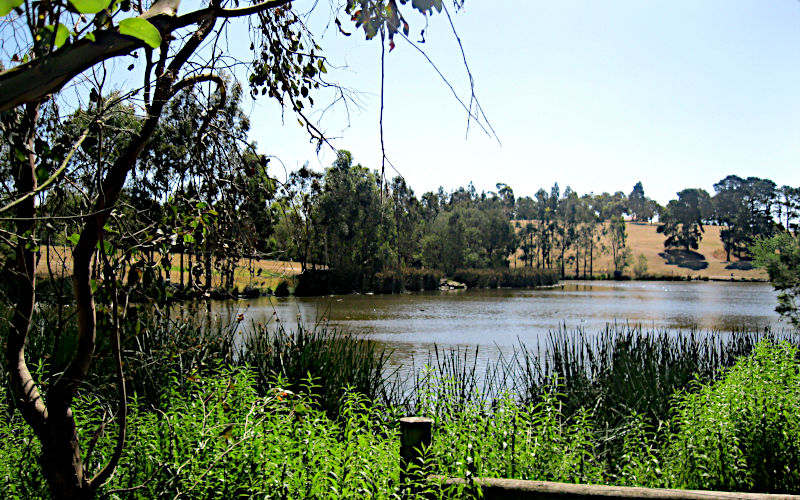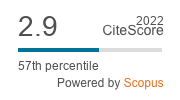The Effects of Cultural Background and Past Usage on Iranian- Australians’ Appreciation of Urban Parks and Aesthetic Preferences
DOI:
https://doi.org/10.3097/LO.201970Keywords:
Australian urban parks, Iranian immigrants, park usage, cultural background, sense of aestheticAbstract
To understand how newcomers and established immigrants perceive cultural landscapes that have been imbued with a nationality’s cultural meanings and heritage, exploring the cultural background and landscape myths and values of that immigrants’ community can be a starting point. Examining whether immigrants perceive or prefer those values in a new landscape setting requires a wider understanding of immigrants’ activities, preferences, and expectations.
The present paper aims to investigate how Australian urban park landscape settings may be perceived by Iranian immigrants in terms of having aesthetic attributes, and how they use these spaces. It approaches the issue of immigration and park experiences through seeking the links between park settings and the way immigrants see and interpret them based on their cultural, social, and geographical backgrounds. It particularly focuses on Iranian immigrants and Iran’s cultural landscape to explore different views of constructed natural landscapes and their effects on park usage and aesthetic preferences.
This study explores how the icons of Iranian cultural landscape (Persian garden), urban park design, and past park use patterns of these immigrants may mediate interactions with new park environments, and how they may contribute to evoke a ‘sense of aesthetic’. It applies survey questionnaire, semi-structured indepth individual interview, and Q methodology with photographs as research methods, and employs theories of ‘place’ and ‘landscape visual characters’ to explore park usage and aesthetic preferences in both contexts: Iran and Australia.
Findings of this study highlight the preference of undertaking ‘passive activities’ in urban park landscapes by Iranian research participants and demonstrate that they highly admire the aesthetic and picturesque aspects of Australian park landscapes. However, they miss the characteristics of Iran’s parks as well as the recreational, social, and sporting activities they used to carry out there.
References
Abkar, M., Mustafa Kamal, M. S., Mariapan, M., Maulan, S., & Sheybani, M. (2010). The role of urban green spaces in mood change. Australian Journal of Basic and Applied Sciences, 4(10), 5352-5361.
Addams, H., & Proops, J. (2000). Social Discourse and Environmental Policy: An Application of Q Methodology,
Amadeo, D., Pitt, D. G., & Zube, E. M. (1989). Landscape feature classification as a determinant of perceived scenic value. Landscape Journal, 8(1), 36-50.
Brown, S. R. (1980). Political Subjectivity: Applications of Q Methodology in Political Science,
Buijs, A. E., Elands, B. H. M., & Langers, F. (2009). No wilderness for immigrants: Cultural differences in images of nature and landscape preferences. Landscape and Urban Planning, 91(3), 113-123. doi:10.1016/j.landurbplan.2008.12.003
Byrne, D., Goodall, H., & Cadzow, A. (2013). Place-Making in National Parks: Ways that Australians of Arabic and Vietnamese Background Perceive and use the Parklands Along the Georges River, New South Wales,
Dearden, P. (1984). Factors influencing landscape preferences: An empirical investigation. Landscape Planning, 11(4), 293-306. doi:10.1016/0304-3924(84)90026-1
Dinarvandi, M., Jafari, H., Salehi, S., & Pari, M. A. (2014). The role of parks in improving the quality of urban life (case study: The sixth region of tehran). Journal of Social Issues and Humanities, 2(1), 34-40.
Fairweather, J. R., & Swaffield, S. R. (2002). Visitors' and locals' experiences of rotorua, new zealand: An interpretative study using photographs of landscapes and Q method. International Journal of Tourism Research, 4(4), 283-297.
Faulks, K. (2000). Citizenship,
Hartig, T., Evans, G. W., Jamner, L. D., Davis, D. S., & Gärling, T. (2003). Tracking restoration in natural and urban field settings. Journal of Environmental Psychology, 23(2), 109-123. doi:10.1016/S0272-4944(02)00109-3
Jessel, B. (2006). Elements, characteristics and character - information functions of landscapes in terms of indicators. Ecological Indicators, 6(1), 153-167. doi:10.1016/j.ecolind.2005.08.009
Jones, M., & Daugstad, K. (1997). Usages of the 'cultural landscape' concept in norwegian and nordic landscape administration. Landscape Research, 22(3), 267-281. doi:10.1080/01426399708706515
Kaltenborn, B. P., & Bjerke, T. (2002). Association between environmental value orientations and landscape preferences. Landscape and Urban Planning, 59(1), 1-11. doi:10.1016/S0169-2046(01)00243-2
Kaplan, R., & Kaplan, S. (1989). The experience of nature: A psychological perspective. The Experience of Nature: A Psychological Perspective,
Khosravaninezhad, S., Abaszadeh, Z., Karimzadeh, F., & Zadehbagheri, P. (0000). Parks and an analysis of their role in improving the quality of urban life, using seeking-escaping model case study: Tehran urban parks. REAL CORP, 2011, 691-698.
Korpela, K., & Hartig, T. (1996). Restorative qualities of favorite places. Journal of Environmental Psychology, 16(3), 221-233. doi:10.1006/jevp.1996.0018
Kuiper, J. (2000). A checklist approach to evaluate the contribution of organic farms to landscape quality. Agriculture, Ecosystems and Environment, 77(1-2), 143-156. doi:10.1016/S0167-8809(99)00099-7
Kyle, G., Graefe, A., & Manning, R. (2005). Testing the dimensionality of place attachment in recreational settings. Environment and Behavior, 37(2), 153-177. doi:10.1177/0013916504269654
Lang, J. (1987). Creating Architectural Theory: The Role of the Behavioral Sciences in Environmental Design,
McKeown, B., & Thomas, D. (1988). Q Methodology,
Ode, Å., Tveit, M., & Fry, G. (2008). Capturing landscape visual character using indicators: Touching base with landscape aesthetic theory. Landscape Research, 33(1), 89-117. doi:10.1080/01426390701773854
Palmer, J. (1983). Assessment of coastal wetlands in dennis, massachusetts. The Future of Wetlands: Assessing Visual-Cultural Values, , 65-79.
Palmer, J. F. (1997). Stability of landscape perceptions in the face of landscape change. Landscape and Urban Planning, 37(1-2), 109-113. doi:10.1016/S0169-2046(96)00375-1
Petruccioli, A. (2003). Nature in islamic urbanism. Islam and Ecology, , 499-510.
Proshansky, H. M. (1978). The city and self-identity. Environment and Behavior, 10(2), 147-169. doi:10.1177/0013916578102002
Shuib, K. B. (2008). Understanding Community Values in Planning for a Conservation Strategy,
Thomas, M. (2002). Moving Landscapes: National Parks and the Vietnamese Experience,
van Exel, J., & de Graaf, G. (2005). Q methodology: A sneak preview. Q Methodology: A Sneak Preview,
van Mansvelt, J. D., & Kuiper, J. (1999). Criteria for the humanity realm: Psychology and physiognomy and cultural heritage. Checklist for Sustainable Landscape Management, , 116-134.
Watson, G. B., & Bentley, I. (2007). Identity by design. Identity by design (pp. 1-289) doi:10.4324/9780080489025
Yazdani, N. (2015). Linking ideology, habitus and landscape: Traditional and contemporary uses of gardens and parks in iran. Anthropology of the Middle East, 10(2), 64-82. doi:10.3167/ame.2015.100205
Yazdani, N. (2018). Meanings of urban park landscapes as insiders and outsiders. Landscape History, 39(1), 103-120. doi:10.1080/01433768.2018.1466552
Yazdani, N., & Lozanovksa, M. (2017). Australian mythical landscape and the desire of non-english-speaking immigrants. Landscape Rev, 17(1), 78-95.
Yazdani, N., & Lozanovska, M. (2016). The design philosophy of edenic gardens: Tracing ‘Paradise myth’ in landscape architecture. Landscape History, 37(2), 5-18. doi:10.1080/01433768.2016.1249719
Zube, E. H., & Pitt, D. G. (1981). Cross-cultural perceptions of scenic and heritage landscapes. Landscape Planning, 8(1), 69-87. doi:10.1016/0304-3924(81)90041-1
Zube, E. H., Pitt, D. G., & Anderson, T. W. (1974). Perception and measurement of scenic resources in the southern connecticut river valley. Perception and Measurement of Scenic Resources in the Southern Connecticut River Valley,

Downloads
Published
How to Cite
Issue
Section
License
Copyright (c) 2019 Nasim Yazdani

This work is licensed under a Creative Commons Attribution 4.0 International License.










